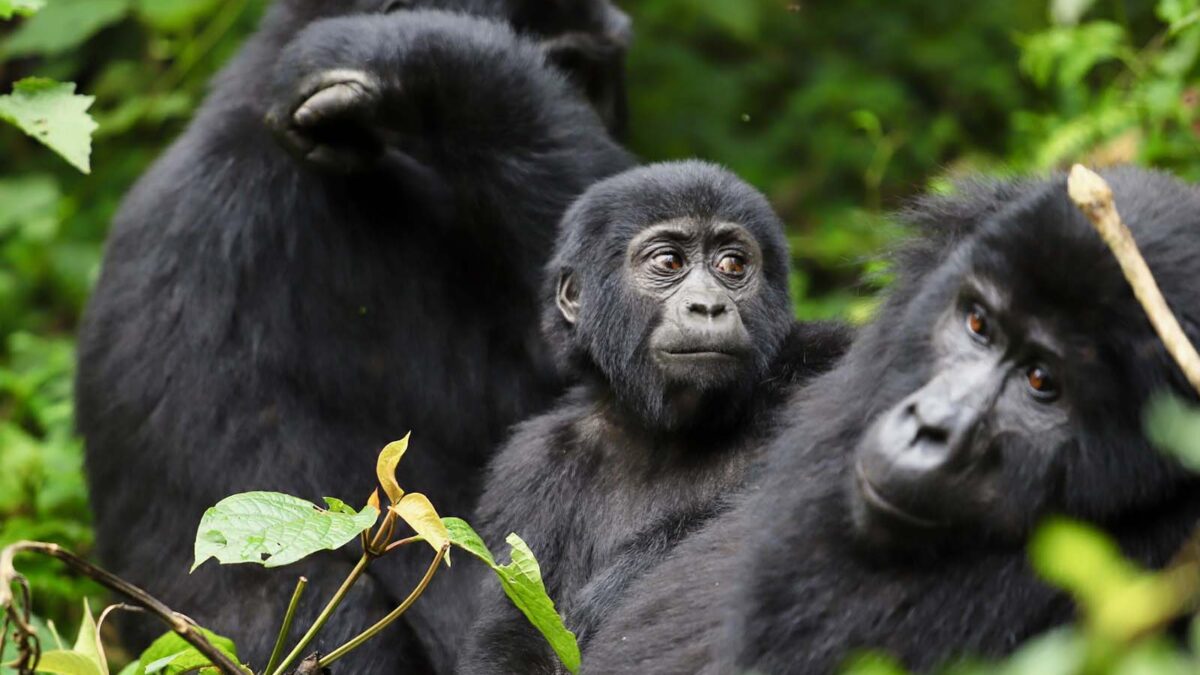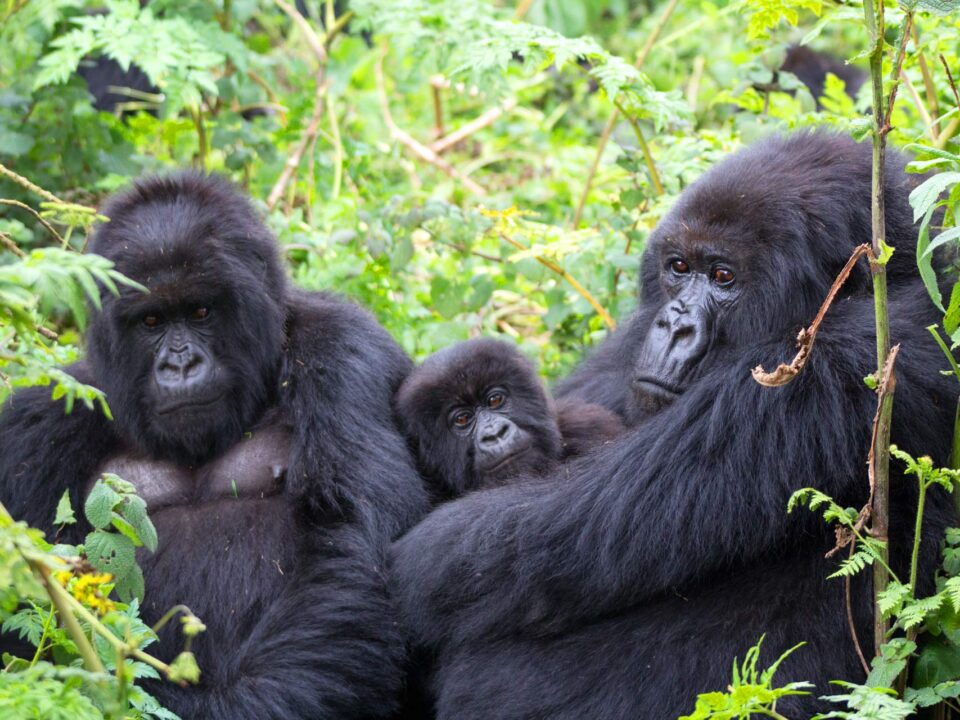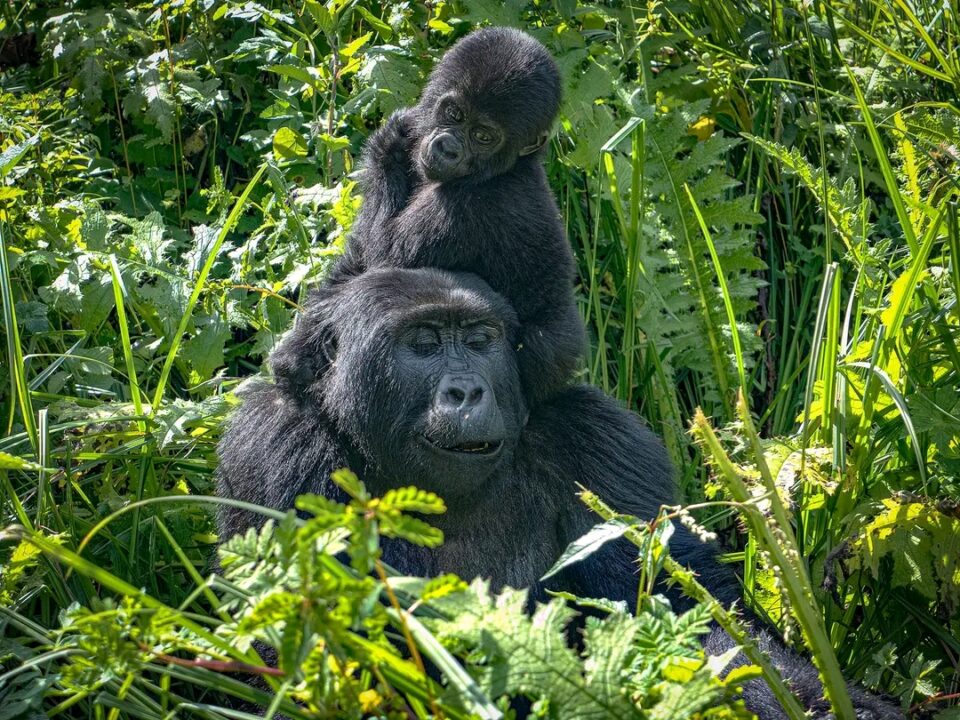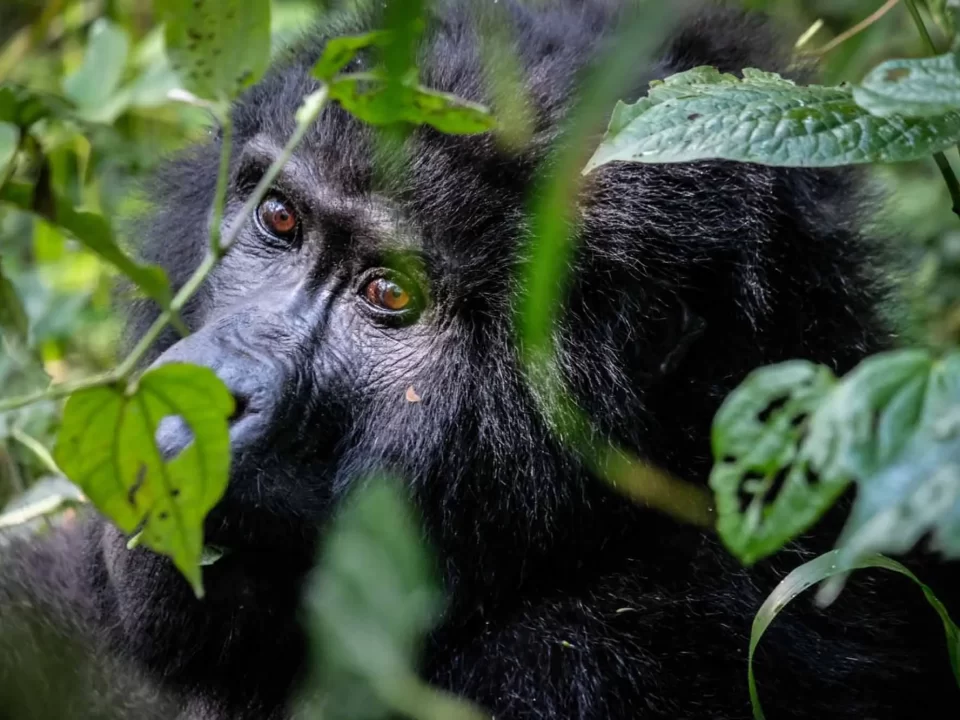Why Visit Bwindi Impenetrable National Park

All You Need to Know About Rwanda Gorilla Tracking
October 4, 2023
5 Days Mgahinga Gorillas, Golden Monkey & Lake Bunyonyi Safari
October 4, 2023Why Visit Bwindi Impenetrable National Park – Where Gorilla Tracking Permits Are Priced at USD800 Per Person Per Trek
Bwindi Impenetrable National Park, a pristine haven in Uganda, beckons travelers with its awe-inspiring biodiversity and the rare opportunity to witness the critically endangered mountain gorillas in their natural habitat. This untouched gem offers a multitude of reasons for nature enthusiasts to pay a visit.
A Rich Tapestry of Flora and Fauna
Bwindi Impenetrable National Park boasts an impressive array of biodiversity, making it an irresistible destination for wildlife enthusiasts. Within its boundaries, you’ll find approximately 120 species of mammals, including ten different primate species, and over 45 small mammal species. The park is also home to an astounding 357 species of birds, 220 species of butterflies, 27 species of frogs, chameleons, geckos, and numerous endangered species. This natural wonderland encompasses a wide range of altitudes and habitat types, supporting an astonishing variety of trees, reptiles, butterflies, birds, moths, and small mammals.
Botanical Treasures of Bwindi
For flora aficionados, Bwindi Impenetrable Forest is nothing short of a botanical paradise. The park hosts over 1,000 species of flowering plants, including 163 tree species and 104 ferns. The northern region of the park is particularly rich in Guineo Congolian flora, housing two internationally recognized species: the Brown Mahogany (Lovoa swynnertonii) and Brazzeia longipedicellata.
Diverse Fauna
Bwindi’s fauna is equally captivating. The park ranks among East Africa’s most diverse forests, with over 1,000 flowering plant species, including 163 tree species and 104 fern species. This Afromontane forest features a dense understory of ferns, vines, and shrubs. Remarkably, about 324 tree species have been documented in the park, with ten of them found nowhere else in Uganda. The lower-altitude northern sector boasts an abundance of Guineo-Congolian flora, which includes two internationally endangered species: the Brown mahogany (Lovoa swynnertonii) and Brazzeia longipedicellata.
The Abundance of Wildlife
For decades, Bwindi Impenetrable National Park has been renowned for its abundant wildlife, particularly its status as a sanctuary for over 400 of the world’s rare mountain gorillas. Of the 880 mountain gorillas remaining worldwide, half of them call Bwindi Impenetrable Forest their home. Mountain gorillas, scientifically known as “Gorilla beringei beringei,” are globally recognized as critically endangered primates. They serve as the park’s main attraction, and presently, there are 12 habituated gorilla groups designated for tourism. Bwindi offers four different trailheads for tracking mountain gorillas: Buhoma, Ruhija, Rushaga, and Nkuringo.
Diverse Primate Species and More
Apart from mountain gorillas, Bwindi is inhabited by an impressive array of primates, including black and white colobus (Colobus guereza), rare L’Hoest’s monkeys (Cercopithecus lhoesti), blue monkeys (Cercopithecus Mitis), red-tailed monkeys (Cercopithecus ascanius), baboons (Papio Anubis), and chimpanzees. In addition to mountain gorillas, Eastern Chimpanzees are among the world’s endangered apes, scientifically referred to as “Pan Troglodyte’s schweinfurthi.” Bwindi also harbors nocturnal ape species such as the potto (Perodicticus potto), Demidoff’s Galago (Galagoides demidoff), and the spectacled Galago (Galago Matschiei).
The park further features forest elephants (Loxodonta Africana), Bush Pigs (Potamochoerus larvatus), Giant Forest Hog (Hylochoerus meinertzhageni), Black-fronted Duikers (Cephalophus nigrifrons), Yellow-backed Duikers (Cephalophus silvicultor), Clawless Otters (Aonyx capensis), Civets (Civettictis civetta), Side-striped jackals (Canis adustus), bats, and rodents.
A Birder’s Paradise
Birders will find their hearts’ desires met in Bwindi Impenetrable Forest, home to around 350 unique forest bird species, including 23 endemic Albertine species, 25 restricted-range species, and four globally threatened species. Among the birds found here are the African Green Broadbill, Grauer’s Rush Warbler, Chapin’s Flycatcher, Oberlander’s Ground Thrush, and Shelley’s Crimson Wing. The unique climatic conditions of the Albertine Rift endemic species have allowed them to thrive in this forest. Besides these endemic species, Bwindi is home to numerous central and West African bird species, typically known from only a few sites in the East African region. These include the Fraser’s Eagle Owl, Western Bronze-naped Pigeon, and White-bellied Robin Chat, along with Lagden’s Bushshrike.
The Butterfly Haven
Butterfly enthusiasts will delight in Bwindi’s rich diversity, featuring over 200 butterfly species. Among these, 42 species are rare and unique to Bwindi, including the Cream-banded Swallowtail (Papilio leucotaenia), Graphium gudenusi, Charaxes foumierae, and the endangered African Giant Swallowtail (Papilio antimachus).
Amphibians and Reptiles
Bwindi Impenetrable National Park is also home to 27 amphibian species, with eleven being Albertine Rift endemics. Six amphibian species hold global conservation significance, including the Western Rift Leaf-folding Frog (Afrixalus orophilus) and Ahl’s Reed Frog (Hyperolius castaneus).
Snakes, Lizards, and More
Furthermore, the park safeguards 14 snake species, nine of which are endemic to Bwindi. It also houses six chameleon species and 14 lizard species.




